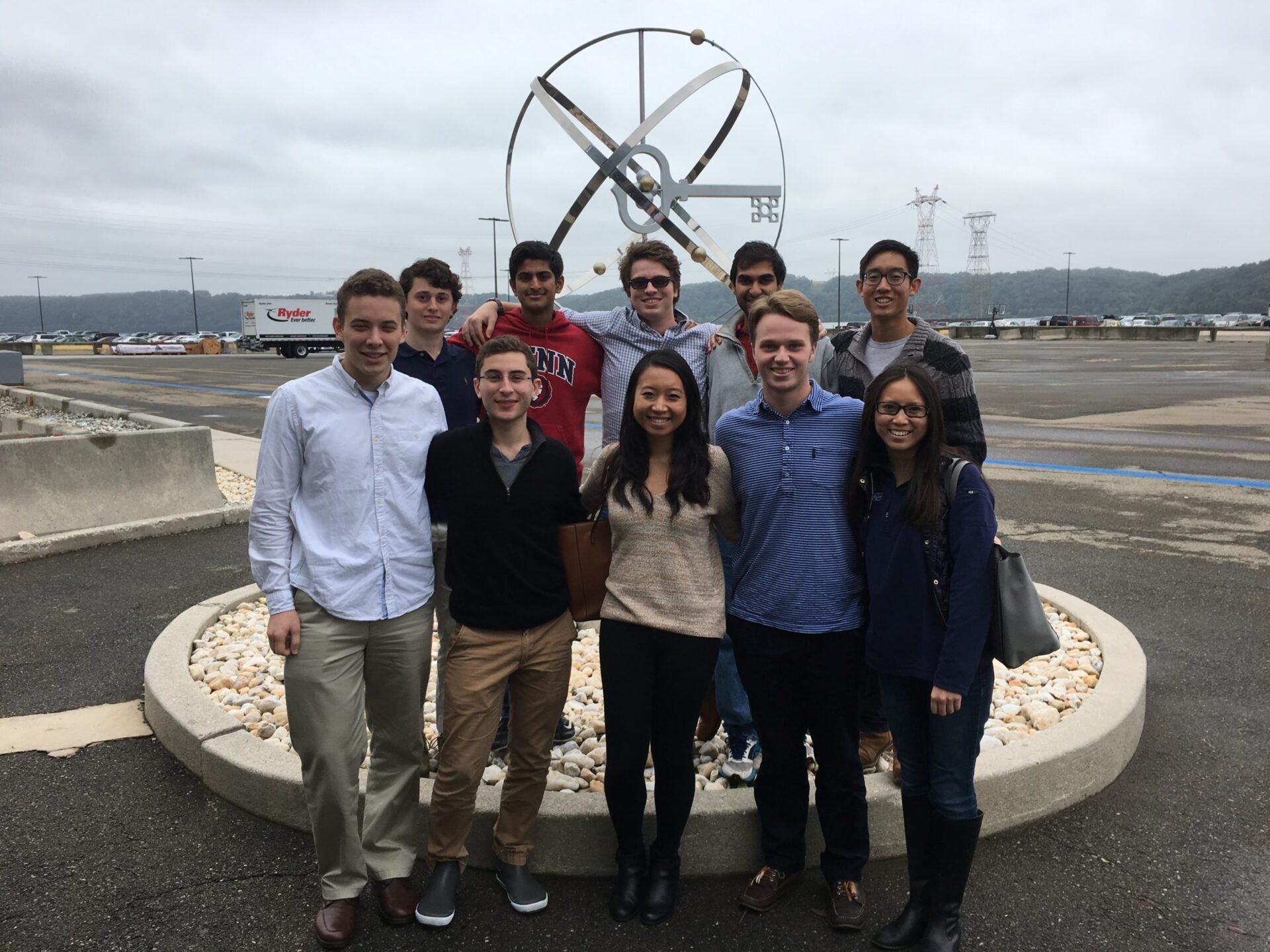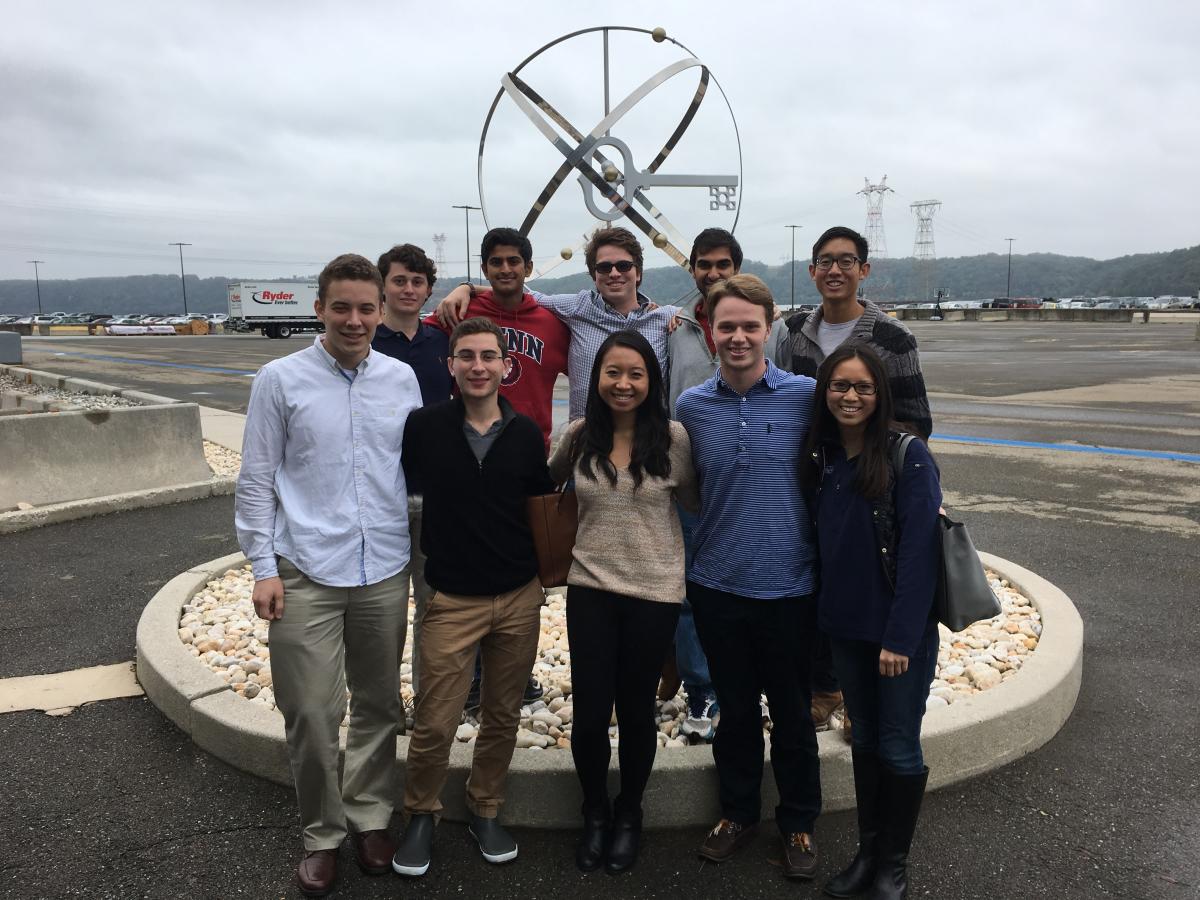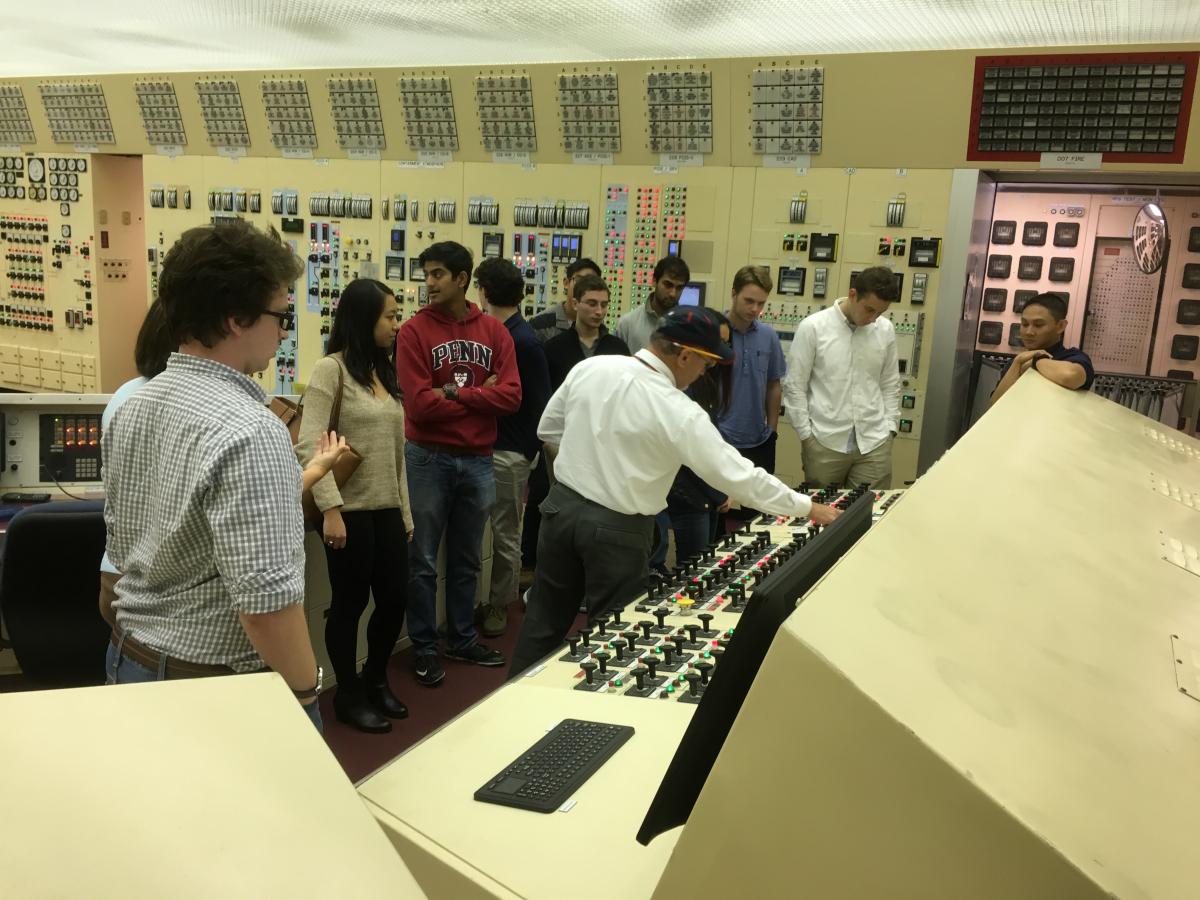
Wharton Students Tour Peach Bottom Nuclear Plant

Energy is something that many of us tend to take for granted; we flip a switch and expect your light, computer, or blender to just turn on. It’s not often that you get to go behind the scenes to see where this energy comes from and how it is produced.
The Wharton Undergraduate Energy Group (WUEG), the only energy-focused club for undergraduate students at Penn, organized a trip to Peach Bottom Atomic Power Station this semester. Through funding from the Kleinman Center, ten students were able to meet with engineers who work at the plant, learn about the inner workings of nuclear power generation, and get a tour of the facilities.
Located about an hour and a half west of Philadelphia in Delta, Pennsylvania, Peach Bottom is a nuclear power plant operated by Exelon that generates about 2600 MW and provides power for over two million people in the region. The station began as an experimental high temperature helium-cooled and graphite-moderated reactor (HTGR), which they call Unit 1; initiated in 1966, this reactor was the first HTGR to operate in the U.S., and the first in the world to produce electrical power. This prototype was shut down after eight years, and the plant now operates two boiling water reactors that began operation in 1974, which are called Unit 2 and Unit 3.
After arriving onsite, the students met with Penn alumni Brian Wright (SEAS ’10) and Chris Ramos (SEAS ’03), who are engineers at Peach Bottom. Brian and Chris gave a presentation on the history of Peach Bottom, the engineering and maintenance behind the plant, the economics of selling nuclear-produced power, and the future outlook of nuclear energy. The students found it extremely interesting to learn about everything from the differences between a Boiling Water Reactor (the design of Peach Bottom’s reactors) and a Pressurized Water Reactor to the various industry forces at play that drive the business of Peach Bottom.

The students also had a tour of the control room simulator, which is a room that the station uses to train employees who go on to operate the actual control room of the plant. Surrounded by walls covered in hundreds of buttons and switches, it was difficult to wrap your mind around how anyone could possibly know what all of them did. Two other employees at the plant, Julie and Jim, demonstrated how operators would respond to different kinds of emergencies, and the students were able to try using the panels themselves. The simulator was followed by lunch where the students were able to ask plant operators about the day-to-day of their jobs, their career choices, and their perspectives on working in the nuclear industry.
Another highlight of the trip was the tour of the plant itself. After putting on hard hats, safety glasses, and earplugs, the students walked to the plant and went through several layers of security, as was to be expected by a nuclear power plant. Each student was also given a dosimeter, which is a device that measures exposure to ionizing radiation. Don’t worry parents: this was mainly a safety precaution, and all devices read 0 at the end of the tour. The tour allowed students to get a firsthand look at the inner workings of the plant and see certain components, such as the generator, steam lines, and used fuel storage.
Christopher Kao reflected that, “My professor recommended I look at the work environment and the steps that the nuclear power plant was taking to ensure safety of the workers, and safety of the system. This made my trip much more fruitful, as I latched onto the small things like safety signs that said ‘Go home safe today’ and noticed television screens that showcased number of days without incident”.
Seeing and learning about the countless complicated systems that need to be monitored, maintained, and operated perfectly in order to generate nuclear power was an extremely eye-opening experience for students and gave them a unique look into the nuclear power industry.
I was absolutely blown away by this trip. I was so overwhelmed with information and eager to process everything I had learned
Christopher Kao
